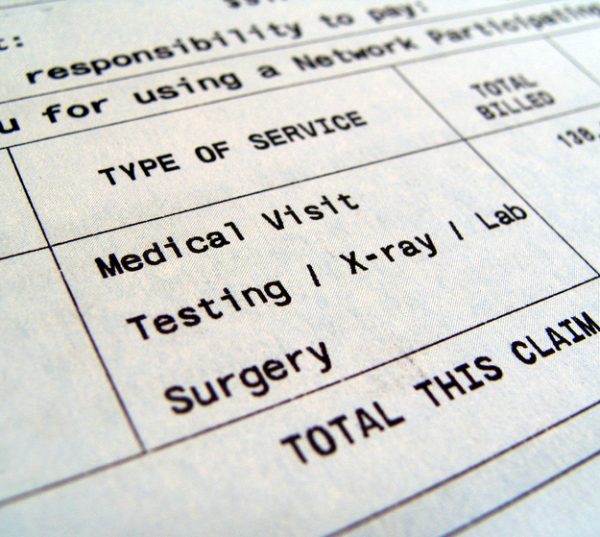
For decades, healthcare was one of the few—if not the only—industries in which consumers agreed to buy services without knowing what the final bill would be or, in some cases, understanding what’s included. With employer health insurance or government healthcare programs typically covering the costs, patients paid their premiums and didn’t worry about the rest.
How times have changed. As health insurance premiums rose, employers and individuals turned to high-deductible health plans to keep their monthly expenses down. Now, about 25 percent of people covered under employer-sponsored health plans have deductibles of $2,000 or more, leaving patients vulnerable to sizable out-of-pocket costs when they need care. Rising healthcare costs and increased fees for out-of-network care add to patients’ financial burdens. In 2019, patients were responsible for paying 35 percent of all medical bill charges, up from just five percent in 2000. Only Medicare and Medicaid account for more provider revenue.
Insured or not, many Americans have trouble paying these costs. Almost two-thirds of U.S. adults have less than $1,000 in savings and more than half of that group have zero savings. Unexpected medical bills, which are among the leading causes of debt in the U.S., have the potential to send individuals and families into a financial tailspin.
Effects on patients and providers
Surprise medical bills are a particularly unnerving healthcare cost concern for patients, outweighing premiums, deductibles and drug costs. A 2018 Kaiser Health Tracking Poll showed 67 percent of Americans are very or somewhat worried about being able to afford an unexpected medical bill for themselves or a family member. Their concerns are justified. Forty percent of insured adults surveyed said they received an unexpected medical bill in the last year and one in 10 reported getting a surprise bill from an out-of-network provider in the same period. In another survey, 41 percent of patients said they were surprised at how expensive their medical bill ended up being. The problem has become serious enough to get the U.S. Congress’ attention, with a number of potential solutions being considered.
The impacts of surprise medical bills go beyond the obvious strain on patients’ finances. If patients can’t or won’t pay, healthcare providers spend more trying to collect and often end up with more bad debt. Medicare bad debt from patients not paying their deductibles and co-insurance increased 17 percent from 2012 to 2016. One study found unexpected charges can cause patients to switch hospitals the next time they need care.
An integrated approach
Providers have opportunities to reverse patients’ negative perceptions of and interactions with the financial side of healthcare. First and foremost is to treat patients like consumers and create personalized, seamless experiences that mirror what they’re accustomed to in other industries. Providers and staff should understand that what seems routine to them can be extremely confusing to patients, especially when they face serious health challenges. Finally, providers’ processes should ensure there are no surprises for patients, from the first appointment to the final bill.
Revamping the patient experience and reducing surprise medical bills starts with accurate and complete bill estimates. Estimates should be detailed down to the rendering physician level and show what the patient’s insurer will cover and the amount the patient is responsible for. Aligning patients’ unique financial circumstances with the most appropriate payment options comes next. Staff should consider the guarantor’s credit score, payment history, income and other financial data to determine their ability and willingness to pay. Ideally, providers will offer a range of ways for patients to pay, including cash, credit cards and personalized payment plans. Customizable scripts can help staff members walk patients through each phase of the financial process to ensure they understand and comply with payment arrangements before services are rendered.
Solutions drive change
Providers who invest in improving the patient experience and eliminating financial surprises reap significant benefits. In one example, a regional health system with a 320-bed hospital and numerous clinics suffered from undefined and inefficient front-end collections processes, which negatively impacted cash flow, bad debt risk, productivity and patient satisfaction. Using an integrated approach to personalize the patient financial experience, they transformed their traditional registration function into a pre-access service center. They changed their culture to emphasize treating patients like consumers, gave their registration teams customized, scripted patient workflows, offered payment options tailored to patients’ needs and implemented a seamless financial clearance process. In three years, bill estimate accuracy went up 95 percent and cash collections increased 2,400 percent. Empowered with information and repeatable processes, staff members’ productivity and job satisfaction increased as well.
Healthcare consumerism is here to stay. Accurate bill estimates, tailored payment plans and a seamless financial experience with no surprises are essential to providers meeting patient expectations and protecting their bottom lines.
Photo: Getty Images
David Shelton serves as Chief Executive Officer for PatientMatters, LLC. He has served in senior healthcare management for more than 15 years, with experience in operations, technology development, and manufacturing. His expertise includes delivering business growth, streamlining operational management, and generating profitability for PatientMatters and its healthcare clients. He is an active member of both Healthcare Financial Management Association (HFMA) and Healthcare and Information Management Systems Society (HIMSS).
This post appears through the MedCity Influencers program. Anyone can publish their perspective on business and innovation in healthcare on MedCity News through MedCity Influencers. Click here to find out how.










